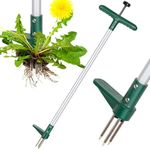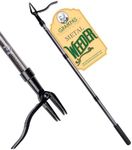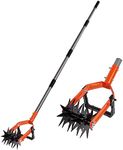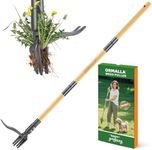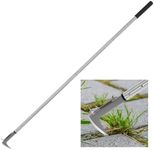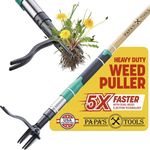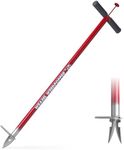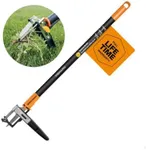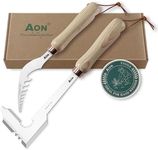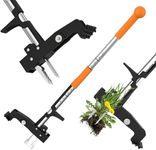Buying Guide for the Best Weed Removal Tools
Choosing the right weed removal tool can make gardening much easier and more enjoyable. The best tool for you depends on the type of weeds you’re dealing with, the size of your garden, and your physical comfort. Understanding the key features of weed removal tools will help you select one that matches your needs and makes the task more efficient and less strenuous.Tool TypeWeed removal tools come in various types, such as hand weeders, hoes, weed pullers, and stand-up weeders. The type refers to the basic design and intended use of the tool. Hand weeders are small and good for precise work in tight spaces, while hoes are better for larger areas and can cover more ground quickly. Stand-up weeders allow you to remove weeds without bending over, which is great for those with back issues. Consider the size of your garden and your physical comfort when choosing the type; for small beds, a hand tool may be best, while for larger areas or if you want to avoid kneeling, a stand-up tool is more suitable.
Handle LengthHandle length affects how you use the tool and your comfort while working. Short handles are common in hand tools and are ideal for close-up, controlled work, but require kneeling or bending. Long handles let you work standing up, reducing strain on your back and knees, and are better for covering larger areas. If you have mobility issues or a large garden, a longer handle is usually more comfortable, while a short handle is fine for small, raised beds or spot weeding.
Material and DurabilityThe material of the tool determines how long it will last and how much maintenance it needs. Common materials include stainless steel, carbon steel, and aluminum for the working end, and wood, plastic, or metal for handles. Stainless steel resists rust and is easy to clean, while carbon steel is strong but may need more care to prevent rust. Aluminum is lightweight but may not be as durable for tough weeds. Choose a tool made from sturdy materials if you have heavy clay soil or tough weeds, and consider lighter materials if you need something easy to handle.
Weeding MechanismThe weeding mechanism refers to how the tool actually removes the weed. Some tools dig and pull, others cut or slice, and some use a twisting action to uproot weeds. Digging and pulling tools are good for deep-rooted weeds, while slicing tools are better for surface weeds. Twisting mechanisms can be effective for removing the entire root system. Think about the types of weeds you have—deep-rooted or shallow—and pick a tool with a mechanism that matches your needs.
Ergonomics and ComfortErgonomics refers to how comfortable and easy the tool is to use. Features like cushioned grips, contoured handles, and lightweight construction can make a big difference, especially if you plan to spend a lot of time weeding. If you have arthritis or hand pain, look for tools with soft, non-slip grips and easy-to-hold handles. Testing the feel of the tool in your hand, if possible, can help ensure it’s comfortable for you.
Ease of MaintenanceEase of maintenance means how simple it is to keep the tool clean and in good working order. Tools that are easy to rinse off and don’t rust quickly will last longer and be more pleasant to use. Stainless steel and plastic are generally easier to maintain than wood or carbon steel. If you want a tool that requires little upkeep, look for rust-resistant materials and simple designs without lots of moving parts.
